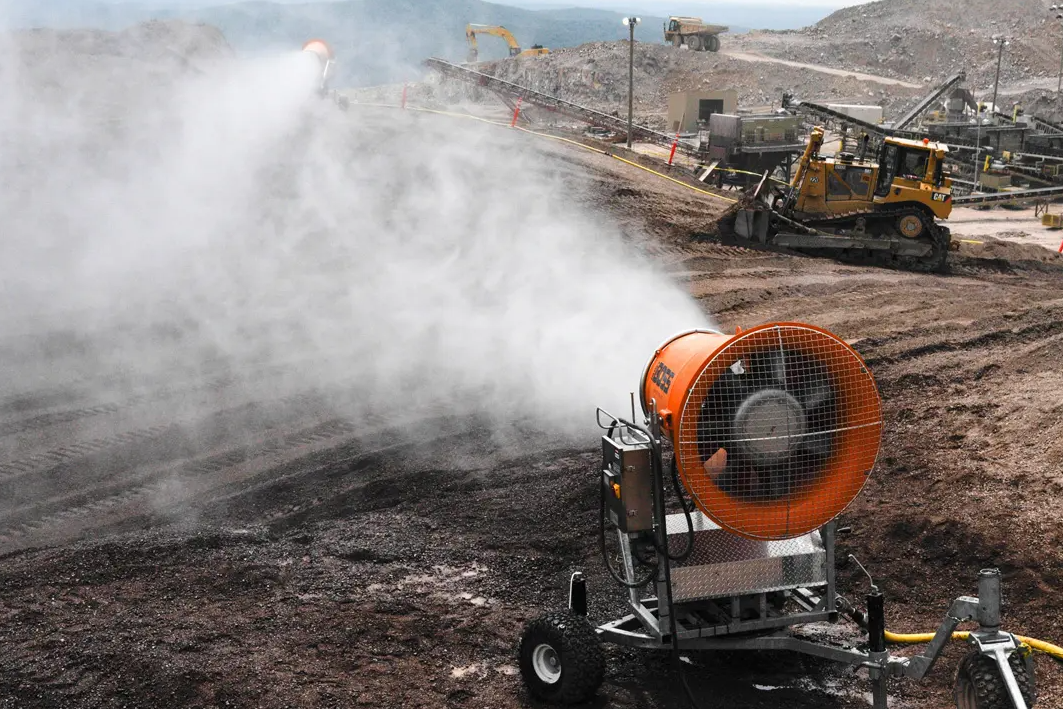Dust control is an essential aspect of maintaining safe and clean industrial sites. Dust particles, when left unmanaged, can create serious health hazards, reduce visibility, damage equipment, and lead to costly fines due to environmental non-compliance. Whether you are managing a construction site, a mining operation, or a manufacturing plant, effective dust control techniques are critical to ensuring worker safety, maintaining environmental standards, and optimizing site operations.
This comprehensive guide explores proven dust control techniques that can help you create a cleaner and safer work environment.
Why Is Dust Control Important?
In many industrial environments, dust is more than just a nuisance—it’s a serious problem. Dust can cause respiratory issues for workers, affect machinery performance, and contribute to poor air quality. Additionally, dust emissions from industrial activities can contaminate surrounding environments, leading to water pollution and harming nearby communities.
Key reasons why dust control is crucial:
- Health Risks: Dust, particularly from materials like silica or asbestos, can lead to long-term health conditions like silicosis or lung cancer. Proper dust control measures reduce these risks by limiting airborne particles.
- Regulatory Compliance: Many regions have strict air quality regulations, requiring industries to manage and limit dust emissions. Non-compliance can result in significant fines and legal action.
- Improved Visibility and Safety: Dust can reduce visibility on industrial sites, increasing the likelihood of accidents. Dust control techniques help keep work environments safe and functional.
- Extended Equipment Lifespan: Dust can clog machinery, leading to frequent breakdowns and increased maintenance costs. By controlling dust, equipment operates more efficiently and has a longer lifespan.
Effective Dust Control Techniques
Several techniques and systems are available to manage dust in industrial settings. The right choice depends on the specific needs of the site, such as the type of dust generated and the conditions under which it is produced.
- Water Sprays and Misting Systems
Water is one of the most common and effective methods for controlling dust. Spraying water onto dust-prone areas binds the dust particles together, preventing them from becoming airborne. Misting systems, in particular, generate fine droplets of water that settle dust particles without over-wetting the area. These systems are ideal for construction, mining, and material handling sites where large amounts of dust are generated.
Advantages:- Inexpensive and easy to implement
- Effective for short-term dust control
- Can cover large areas
- Disadvantages:
- Water usage may not be sustainable in drought-prone areas
- Overuse of water can create mud, which may cause safety hazards
- Chemical Dust Suppressants
Chemical dust suppressants are often used when water alone is insufficient. These products, which include salts, polymers, and surfactants, are applied to dust-prone areas and create a binding effect that prevents particles from becoming airborne. Chemical suppressants are especially useful in industries such as coal mining, where dust control is a major concern.
Advantages:- Long-lasting effect, reducing the need for frequent application
- Suitable for use in arid environments where water is scarce
- Can be customized to suit specific types of dust
- Disadvantages:
- Higher cost than water
- Potential environmental concerns with certain chemicals
- Enclosed Conveyor Systems
In manufacturing and material handling operations, dust is often generated when materials are transferred from one point to another. Enclosed conveyor systems are a mechanical dust control method that keeps dust contained during transport. These systems not only reduce dust but also help to improve energy efficiency by preventing material loss during transport.
Advantages:- High dust containment efficiency
- Reduces the need for external dust control measures
- Prevents material loss
- Disadvantages:
- High initial setup costs
- Requires regular maintenance to prevent breakdowns
- Dust Collection Systems
Dust collection systems use filters, vacuums, and other mechanisms to capture dust before it becomes airborne. These systems are often installed at points of high dust generation, such as crushers, grinders, and material handling areas. There are several types of dust collectors, including baghouses, cyclones, and cartridge collectors, each suited for different types of dust and operations.
Advantages:- Highly effective at capturing fine dust particles
- Helps improve indoor air quality
- Reduces the risk of dust explosions in confined spaces
- Disadvantages:
- Expensive to install and maintain
- Filters require regular cleaning and replacement
- Vegetation and Windbreaks
For outdoor industrial sites, planting vegetation or installing windbreaks around the perimeter can help reduce the spread of dust. Vegetation naturally traps dust particles, while windbreaks reduce wind speeds, which can carry dust offsite. This method is commonly used at mining and construction sites to complement other dust control techniques.
Advantages:- Environmentally friendly and sustainable
- Provides long-term dust control
- Improves the site’s aesthetic appearance
- Disadvantages:
- Takes time to establish
- Not suitable for all environments, particularly arid or rocky areas
Best Practices for Dust Control
Implementing dust control techniques effectively requires careful planning and management. Below are some best practices to ensure that your dust control measures are successful:
- Identify Dust-Generating Activities
The first step in developing an effective dust control plan is identifying where and when dust is generated on the site. This can be during material handling, vehicle movement, or construction activities. Once identified, you can apply the most appropriate control methods. - Monitor Air Quality
Regularly monitor air quality levels around the site to determine the effectiveness of dust control measures. Air quality monitoring systems can provide real-time data, helping you adjust your dust control strategy as needed. - Train Workers
Ensuring that workers are aware of the dust control measures and understand how to implement them is essential. Training should include the correct use of equipment, personal protective gear, and the importance of dust control for health and safety. - Regular Maintenance of Dust Control Systems
Dust control equipment requires regular maintenance to function effectively. Filters, nozzles, and chemical application systems should be inspected and cleaned regularly to prevent malfunctions or reduced effectiveness.
Adapt to Weather Conditions
Weather conditions can greatly impact dust levels. Dry, windy days will require more aggressive dust control measures, such as increasing water spray frequency or applying chemical suppressants more often. Being proactive in response to weather changes can help minimize dust emissions.




